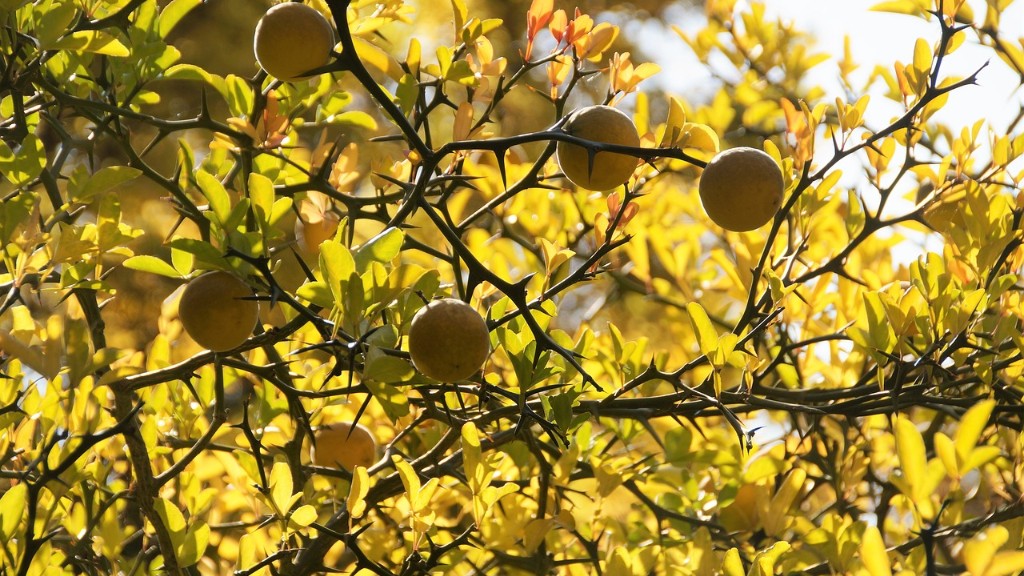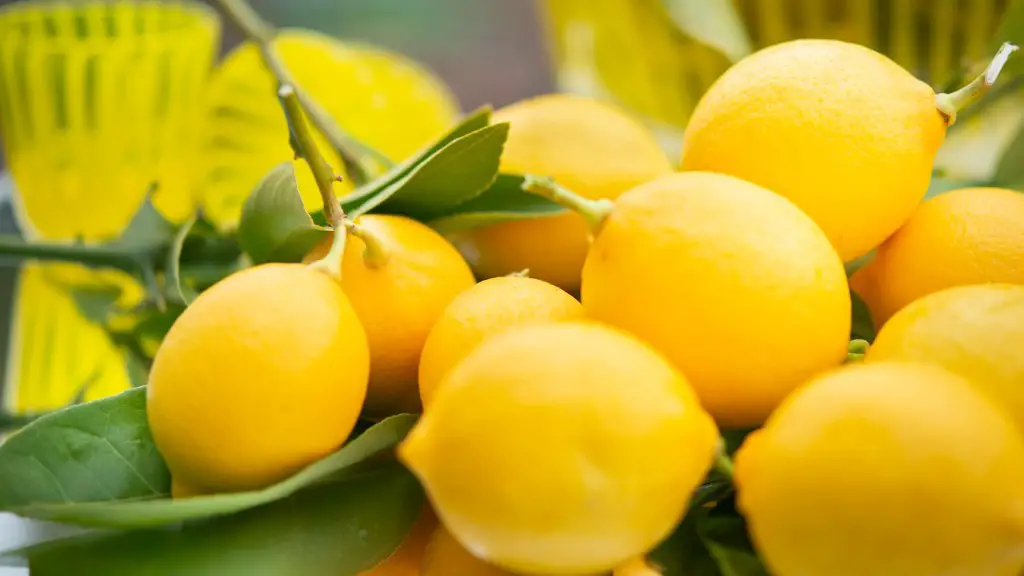When it comes to picking a good lemon tree, many people believe that it is mainly a matter of luck. While luck can certainly play a role in getting a good lemon tree, there are several other factors to consider. Firstly, it is important to choose a tree that is appropriate for the climate in which it will be growing. Different varieties of lemon trees thrive in different climates, so it is important to know what type of climate your lemon tree will be growing in before you select a variety. Secondly, it is also important to consider the amount of space you have available, as lemon trees can grow quite large. If you don’t have enough room for a full-sized tree, then you may want to opt for a dwarf lemon tree, as these take up significantly less space. Thirdly, it is important to inspect the tree before you purchase it. Look at the leaves and branches for any signs of disease or pests as these can quickly spread through your tree. It is also a good idea to smell the fruit to make sure it is ripe and not overly acidic. Fourthly, it is also important to consider the cost of the tree. Lemon trees can be quite expensive, so be sure to shop around and compare prices before you make a purchase. Lastly, never be afraid to ask questions when you visit a nursery or garden centre. The staff there are always happy to help and can provide important advice that will help you select the best lemon tree.
Climate Conditions
When selecting a lemon tree, the most important factor to consider is the climate conditions in which it will be growing. Lemon trees grow best in areas where temperatures range from 18 to 25-degrees Celsius and where humidity levels are always moderate. If temperatures get too high, the tree will suffer from excessive heat, whereas if temperatures are too low, the tree will not produce as much fruit. Additionally, the tree will require protection from windy conditions and should be situated away from any areas that experience frost. It is important to check the current climate conditions in your location before selecting a variety, in order to give the tree the best chance of growing successfully.
Location and Soil Quality
The location of your lemon tree is also very important. The best place to plant it is in an area that receives full sunlight for at least 6 to 8 hours a day. This will ensure that the tree receives enough sunlight to produce the right amount of fruit. Additionally, the soil should be well-draining and contain good levels of organic matter. This will provide the tree with the necessary nutrients to grow and thrive. It is also important to add a layer of mulch around the tree to protect its roots and retain moisture.
Fertilization and Pruning
Once you have chosen a lemon tree and planted it in the correct position, it is important to fertilize it at least once a month. This will ensure that the tree receives all the nutrients it needs to stay healthy and produce an abundance of fruit. Additionally, it is also important to prune the tree on a regular basis. Pruning keeps the tree healthy and encourages new growth by removing any dead or diseased branches. Pruning should be performed in late spring or early summer, as this is when the tree is most active.
Watering and Irrigation
Caring for a lemon tree also involves providing it with the right amount of water. During the warmer summer months, it is recommended that lemon trees be watered at least once a week. During the winter months, the tree should be watered less frequently, as the cold temperatures slow its growth. Additionally, it is also important to provide adequate drainage and irrigation, as this will keep the soil moist but not soggy. If the soil becomes too wet, the tree can suffer from root rot.
Protection from Pests and Disease
The best way to protect your lemon tree from pests and disease is to keep it healthy. This means providing proper nutrition, watering it regularly and avoiding exposing it to extreme temperatures. Additionally, it is important to inspect the tree regularly for any signs of disease or pests. If any are found, they should be treated immediately in order to prevent them from spreading. Lastly, it is important to prune the tree on a regular basis as this can prevent pests and disease from taking hold.
Harvesting and Storage
Harvesting and storing lemon trees is an important part of their care. Lemons should be picked when they are ripe, as this will ensure that they maintain their optimal flavor and nutrients. Once harvested, lemons should be kept in a cool and dry place, and should be consumed within a few days. If you have more lemons than you can use, you can freeze them for up to six months in order to preserve their freshness.
Organic Care
Organic care for lemon trees is quite important, as it helps to ensure that the fruit that is produced is free of any harmful chemicals. There are several ways to practice organic care, such as using organic fertilizers and avoiding chemical pesticides. Additionally, watering the tree with rainwater is a great way to provide it with nutrients and keep the soil healthy. Organic gardening practices, such as mulching and companion planting, are also effective in keeping pests and diseases away.
container Gardening
Container gardening is another great way to grow lemon trees. This method is ideal for those who don’t have a lot of space or live in areas where the climate is too cold for the tree to grow outdoors. Container lemon trees should be planted in a soil that is rich in nutrients and well-draining, and should be placed in an area that gets at least 6 to 8 hours of sunlight a day. Additionally, it is important to make sure that the container is large enough to accommodate the tree’s growth, and that the drainage holes in the bottom of the container are adequate.
Daily Care and Maintenance
Daily care and maintenance of lemon trees is essential in order to ensure they remain healthy and produce an abundance of fruit. It is important to water the tree regularly, as this will help to keep the soil moist but not soggy. Additionally, fertilizing the tree with an organic fertilizer on a monthly basis is also very beneficial. Pruning should also be done on a regular basis in order to remove any dead or diseased branches and to encourage new growth. Finally, it is important to inspect the tree regularly for any signs of disease or pests as these can quickly become a problem.


